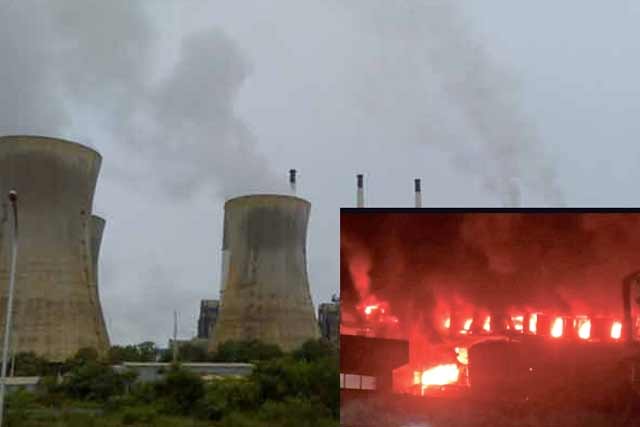The unit I was under forced outage for 22 days since April 22, while unit II for 26 days. It is bad as both the units remain under forced outage at a time when the state power demand peaks coinciding with the peak summer.
Sources in the trade union said that the trouble over the fly ash handling at stage II started last year when a powerful contractor lost the contract to a new company. “Ever since the controversy emerged, the power generation in the two units were affected and witnessed periodic forced outage and generation was maintained at a low level due to non-removal of fly ash. There were allegations of damages done to equipment as well,” the source added.
The ESP filters out particles such as fumes, fly ash and suspended dirt from the gas stream before releasing them out of the chimney. “The fly ash accumulated on the ESP should be removed regularly, but it was not done in the stage II plant,” said S Neelakanta Pillai, a retired executive engineer of Tangedco and founder of Citizen’s Contribution in Democracy. He added that he has been continuously writing to the Tangedco chairman regarding the NCTPS Stage II.
“The unit I completed one-month annual overhauling in January this year, but it is out of service for over 22 days. If the maintenance work was done properly why did the unit is under outage for such a long time?” he asked.
Several internal communications were made to the Ash Handling Plant (AHP) Division of the NCTPS-II since last year over the frequent tripping of ESP fields and heavy leakage of ash and ash slurry from ECO hoppers. On March 11, the executive engineer of the Boiler Maintenance Division wrote to the AHP Division noting that it has already highlighted several times the regular problems in the unit – I and II ESP due to improper ash evacuation from the economiser and APH and ESP hoppers.
“It is noticed high ash level indications are frequently appearing in many of the ESP fields, including the last rows of ESP. If these high ash levels in the ESP hoppers are continued, it may result in severe secondary damages to the field internals. And it may impact the ESP performance,” it said.
A senior official of the NCTPS-II said that the technical team studied the plant and they did not find anything to establish sabotage. “There is a need for improving the fly ash evacuation system. We will do it,” the official said, adding that the plant would commence generation in a week time.
Fire breaks out in coal conveyor of Mettur thermal power plant
A fire broke out in the coal conveyor system of the Mettur Thermal Power Plant early on Tuesday morning.
The fire was put off within two hours by the Fire and Rescue Service personnel and the reason behind the outbreak is being analyzed. Currently, power production continues in the thermal plant. “But generation of power may continue till the existing stock in the storage unit gets exhausted. Then, coal supply to the power generation unit could not be done as fire has damaged the conveyor belt supplying coal to the production area,” said an official.
Some of the workers noticed the fire at 3.50 am and alerted senior officials and the fire station. A large team led by District Fire Officer Velu and six fire engines from the thermal plant immediately rushed to the spot and engaged in the fire-fighting task.
Though the fire had been put off, the conveyor area had to be cooled down to take up rectification works. “Experts from Chennai are likely to visit the plant to carry out the rectification work and assess reasons behind the fire outbreak,” said an official.
The thermal power plant has a capacity to generate 840 MW and is now into generating 700 MW of power on a daily basis. A similar fire broke out in the conveyor belt in 2013, when it took nearly about 20 days to rectify the issue.
“But this time it may not take that long as the damage caused by the fire is only minimal,” added the official.



































